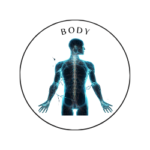 Mind
Mind
- Digital and Modern Well-being
- Mental Health and Emotional Well-being
- Mind-Body Connection and Holistic Health
- Parenting and Family
- Personal Growth and Development
- Relationships and Social Well-being
- Stress and Relaxation
- Therapeutic and Creative Practices
- Trauma and Recovery
- Work, Productivity, and Discipline
 Body
Body
 Fitness
Fitness
 Food
Food
 Beauty
Beauty
Digital Detox for Mental Clarity

Digital Detox: Reclaiming Your Time and Attention
In today’s hyper-connected world, it’s becoming increasingly difficult to escape the constant hum of notifications, messages, and updates. While technology has brought undeniable conveniences, it has also eroded our ability to disconnect and be present. We find ourselves endlessly scrolling, answering emails at all hours, and distracted by the ping of our phones even during moments meant for relaxation. This is where the concept of a digital detox comes into play.
A digital detox isn’t about ditching technology forever—it’s about taking mindful breaks to reclaim your time and attention, reconnect with yourself, and re-establish boundaries that safeguard your mental health. Let’s dive into why a digital detox can be a powerful tool for improving your well-being and how you can start taking steps to disconnect in a connected world.
The Impact of Technology on Well-being
Although technology offers many benefits, from connecting with loved ones to enhancing productivity, the downside is the toll it can take on our mental and physical health. Constant engagement with digital devices can:
-
Increase stress and anxiety: The pressure to always be reachable or up-to-date with the latest news can create a constant state of alertness, leading to stress and anxiety.
-
Disrupt sleep patterns: Exposure to the blue light emitted by screens, especially before bedtime, interferes with the production of melatonin, making it harder to fall asleep and achieve restorative rest.
-
Shorten attention span: The rapid pace at which we consume information online conditions our brains to crave constant stimulation, making it harder to focus on tasks for extended periods.
-
Reduce face-to-face interactions: Too much time spent online can result in less meaningful real-world connections, which are essential for emotional well-being.
-
Neglect of physical activity: Long hours of screen time often replace opportunities for physical movement, which can negatively impact fitness and overall health.
Why You Need a Digital Detox
A digital detox gives you the chance to reset, both mentally and physically. Disconnecting from technology for a set period can:
-
Boost mental clarity: Without the constant bombardment of information, your mind is free to wander, think creatively, and reflect on what truly matters.
-
Improve sleep quality: Turning off screens at least an hour before bed allows your body to wind down naturally, leading to better sleep and more energy the next day.
-
Enhance productivity: Fewer distractions from notifications mean more focused time on tasks, allowing you to complete work more efficiently.
-
Strengthen relationships: When we’re not glued to our devices, we have more opportunities to connect meaningfully with others, whether it’s through conversations, shared activities, or simply being present in the moment.
-
Encourage mindfulness: A digital detox encourages you to be fully present in your surroundings and activities, cultivating mindfulness that can reduce stress and increase overall happiness.
How to Start Your Digital Detox
Starting a digital detox doesn’t require going cold turkey. Here are some practical steps to help you ease into the process and make the most of your time away from screens:
1. Set Clear Boundaries
Decide on specific times when you’ll unplug. This could be during meals, the first hour after waking, or an hour before bed. Creating designated no-tech times helps train your mind to unwind and shift focus to the present moment.
2. Identify Your Digital Triggers
Pay attention to what prompts you to reach for your devices. Is it boredom, habit, or a specific notification? Once you know your triggers, it’s easier to interrupt the pattern and opt for healthier alternatives like going for a walk or reading a book.
3. Declutter Your Digital Space
Remove apps that drain your attention without adding value. Limit social media to specific times of the day, or even delete it temporarily during your detox. This reduces the temptation to check in constantly.
4. Use Technology Mindfully
Not all technology use is detrimental. You can incorporate tools like meditation apps, podcasts, or playlists that support your wellness goals. Mindful use of digital tools is about making intentional choices rather than reflexively scrolling.
5. Rediscover Offline Activities
Fill your tech-free time with activities that nourish your body and soul—reading, journaling, taking walks, cooking, or spending quality time with loved ones. These offline experiences will help you reconnect with yourself and create lasting memories without the interference of screens.
How Long Should Your Digital Detox Last?
The duration of your digital detox depends on your goals and lifestyle. For some, starting with a weekend away from devices can be a powerful reset. Others might choose to integrate daily digital breaks into their routine. Even micro-detoxes, such as turning off notifications during work hours or banning phones from the bedroom, can have significant benefits.
What Happens After the Detox?
The goal of a digital detox isn’t just to take a break but to create lasting changes in your relationship with technology. After your detox, you may find that you want to maintain some of the habits you’ve formed, such as reduced screen time in the evenings or more mindful use of social media.
Remember, the aim is balance—not perfection. It’s about using technology as a tool, not allowing it to control your time and attention.
Final Thoughts
A digital detox can be a transformative experience. By stepping away from your devices, even temporarily, you can reclaim your time, refocus your energy, and re-engage with the world in a more mindful, meaningful way. In a world that’s constantly pulling us in a thousand directions, a digital detox offers the chance to pause, breathe, and reconnect with what truly matters.
So, are you ready to reclaim your time and attention?
Tip: If you’re feeling overwhelmed by technology, consider starting small. Turn off push notifications for non-essential apps and commit to a tech-free hour each day. Over time, these small breaks can have a big impact on your well-being.


